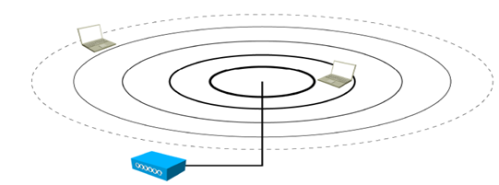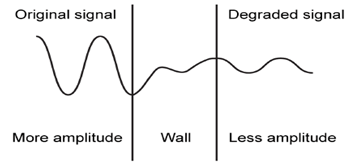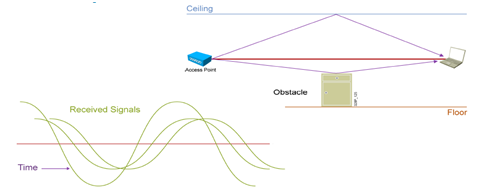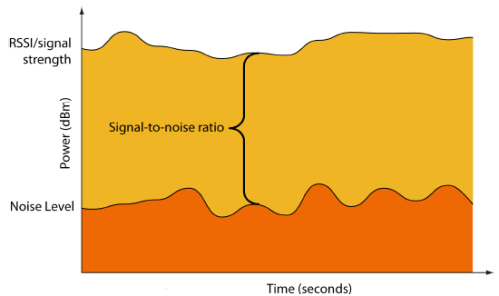RF Principle in Wireless Network
- Wireless network use RF signals
- RF is electromagnetic waves
- Spectrum defines wave’s size, grouped by categories
- Wireless N/W radio range is in the microwave segment
Wavelength
- The signal generated in the transmitter is sent to the antenna
- The elections movement generates an electric field which is a wave
- The size of the cycle pattern is called wavelength
Radio waves repeat their pattern over time (at a given point in space), but also over space. The physical distance from one point of the cycle to the same point in the next cycle is called a wavelength, which is usually represented by the Greek symbol λ (lambda). The wavelength is the physical distance covered by the wave in one cycle.
Frequency
- The frequency determines how often a signal is seen
- 1 cycle per second in 1 Hertz
- Low frequency travel farther in the air than higher frequencies
Antenna
- Amplitude is the vertical distance, or height, between crests
- For the same wavelength and frequency, different amplitude can exists
- It represents the quality of energy injected in the signal
- This value is usually regulated as it can affect the receiver
Free Path Loss
- As the wave spreads away from the emitter, it gets weaker
- The quantity of energy declines as the distance increases: the available quantity of energy available on each point of the circle is less as the circle is larger; the receiver catches only part of this energy
- Determining a range is determining the energy loss depending on the distance
Absorption
- Absorption takes energy from the wave
- This energy is dissipated in heat in the obstacle
- When 100% of the energy is taken, the wave stops
- The effect of absorption is to reduce amplitude
- The signal is therefore less powerful, but keeps the same wavelength and frequency
Reflection
- Part of the energy is reflected
- Part may be transmitted
- The angle of reflection is the same as the initial angle
- Reflection depends on the material roughness relative to the wavelength and the angle
- Amplitude has no impact
Multipath
- Occurs when the signal reflects on surface and arrives to the receiver at different times
- Delayed multiple copies of the same signal hit the receiver
- Depends on the wavelength and the position of the receiver
Multipath: Phase
- 2 signals are in phase when their cycle crests coincide
- Being out of phase weakens both signal or cancels them if amplitude and wavelength are the same
Scattering
- Occurs when micro particle deviate the wave in multiple directions
- Affects shorter wavelengths more than longer ones
- Can weaken the signal or block it
Refraction
- Occurs when the wave passes from one medium to another: direction change
- Minor effects on indoor networks
- Can have high impacts on outdoor long range links
RF Calculation:
RSSI and SNR
- RSSI is the signal strength indicator
- dBm value transformed from a vendor dependant grading coefficient
- Usually negative value, the closer to 0 is better
- SNR is signal strength relative to noise level
- The higher the better
The dB scale is also used to compare the relative power (called gain) of antennas.
dBi is the most common scale for antenna gains, but some wireless professionals prefer to use an existing antenna as the reference.
The antenna chosen is the simplest possible antenna, called a dipole antenna. This comparison is expressed in dBd.
dBi = dBd + 2.14
dBd = dBi – 2.14
EIRP
With the multiple possible combinations of AP transmitter power level, cables and antenna, you need a way to determine how much energy is actually radiated from the antenna toward the main beam. This measure is called the Effective Isotropic Radiated Power (EIRP). In simple terms, the EIRP, expressed in dBm, is simply the amount of power emitted by the transmitter plus the gain (in dBi) of the antenna (and any amplifier on the path). We also must remove the power lost in cable or attenuators:
EIRP = Tx power (dBm) + antenna gain (dBi) – cable loss (dB)
The EIRP is very important. Most countries allow a maximum Tx power of the transmitter and a final maximum EIRP value. When designing networks with specific antennas, you must know your system EIRP and make sure it complies with local regulations.











